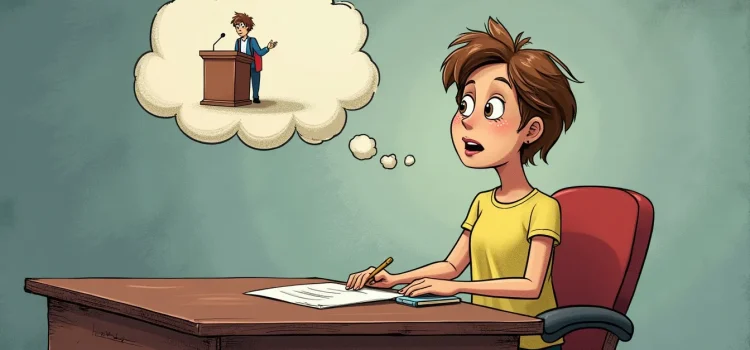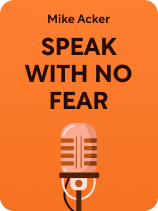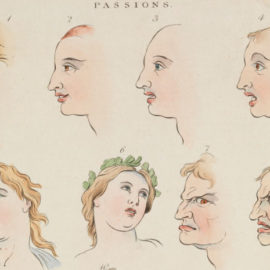

This article is an excerpt from the Shortform book guide to "Speak With No Fear" by Mike Acker. Shortform has the world's best summaries and analyses of books you should be reading.
Like this article? Sign up for a free trial here.
Are you nervous about speaking in front of a crowd? Do you need to know how to prepare for speaking in public?
Overcoming the fear of public speaking can be challenging, but there are strategies to help. If you have a speech or presentation coming up, a quick method involves planning for worst-case scenarios to build up your confidence and readiness.
Read on to discover how you can use your imagination to conquer your public speaking anxiety and deliver a memorable presentation.
Prepare for Speaking in Public
In Speak With No Fear, Mike Acker presents uncovering and healing from past trauma as the most effective way to overcome your fear of public speaking. But this strategy can be difficult and time-consuming; it’s not practical if you’ve got a speaking engagement coming up soon. Acker’s alternative advice on how to prepare for speaking in public is a much quicker fix. However, be aware that you’ll have to do this strategy all over again for each speech or presentation you give, since it prepares you for only one specific scenario.
With this strategy, Acker advises you to intentionally imagine the worst-case scenarios that could happen when you give a speech or presentation. The idea is to purposefully make yourself anxious—which might sound counterintuitive, but doing so allows you to practice controlling your anxiety in a low-stakes environment. As an additional benefit, this strategy also allows you to plan out what you’ll do if that worst-case scenario happens to come up; having that plan in your proverbial back pocket will further bolster your confidence.
For example, perhaps your worst-case scenario is that you step up to the podium and realize you forgot your notes. Imagining that scene in great detail will let you practice controlling the panic and embarrassment that comes with forgetting something so important. Imagining that situation could also help you come up with a backup plan, like also putting those notes into your phone just in case you forget to bring the written copy.
(Shortform note: Imagining situations in order to prepare for them comes naturally to most people, and it’s highly effective; this is because imagination is hardwired into our genes. In The Selfish Gene, biologist Richard Dawkins explains that imagination is actually an ancient survival strategy. Our distant ancestors (and possibly other animals) were able to mentally simulate a huge variety of different situations, and thereby predict what might happen as the result of various actions on their part. For example, it doesn’t take much imagination to predict what would happen if a tree fell on you, but it does take some—and, because you can imagine it, you stay away from trees that people are in the process of cutting down.)
Acker says to start by imagining all the details of the venue, audience, and the speech you plan to give, making your mental image as complete and as vivid as possible. Then, to build up your nerves and anxiety, think about how it could all go wrong. Next, practice calming techniques like deep breathing until the anxiety is gone (or at least manageable).
The author adds that, even if something does go wrong during your speech, it’ll rarely be as catastrophic as the scenario you imagined. Therefore, by preparing for the worst, you’ve over-prepared for whatever actually happens, and you’ll be able to handle any problems with ease.
| Imagine the Best-Case Scenario Acker suggests imagining the worst possible outcomes in order to mentally prepare yourself for them and practice controlling your emotions. However, some research suggests that the opposite approach—imagining the best possible outcomes—is also an effective way to reduce your anxiety. For example, one research study explored the potential benefits of positive mental imagery (imagining good outcomes) for people struggling with public speaking anxiety. The study divided participants into two groups: one group engaged in a positive mental imagery exercise prior to a public speaking activity, while the other group didn’t. Those who did the positive imagery exercise showed reduced anxiety compared to the control group, both leading up to and during the public speaking task. Furthermore, the people who performed the exercise tended to rate their performances more highly, meaning they continued to feel better than the control group after the activity was over. The researchers note that people with anxiety disorders often find themselves trapped in a cycle of negative mental imagery, imagining worst-case scenarios and potential catastrophes. Therefore, they hypothesize that positive mental imagery helps to counteract that anxiety by disrupting negative thought patterns and shifting people’s thoughts to more optimistic directions. |

———End of Preview———
Like what you just read? Read the rest of the world's best book summary and analysis of Mike Acker's "Speak With No Fear" at Shortform.
Here's what you'll find in our full Speak With No Fear summary:
- How to become a confident and compelling speaker
- How to plan for the worst when you’re speaking on stage
- Why people in the US fear public speaking even more than death






